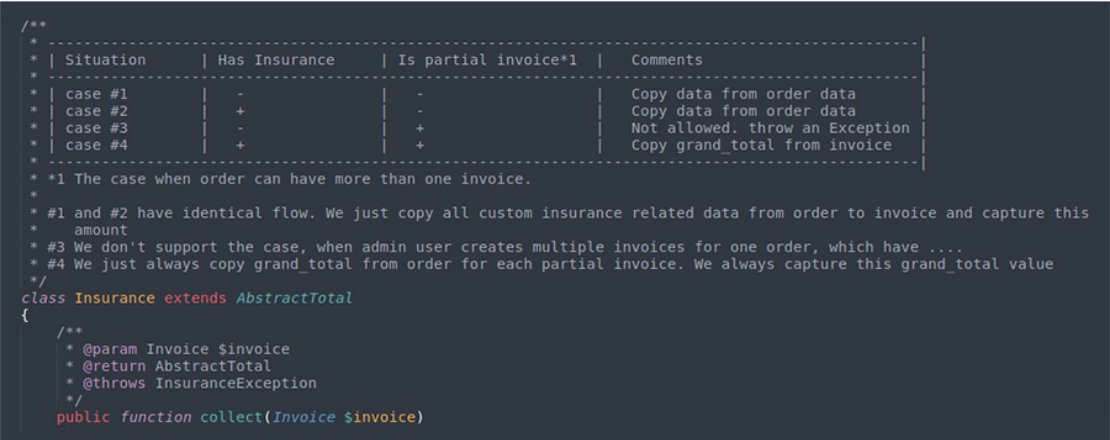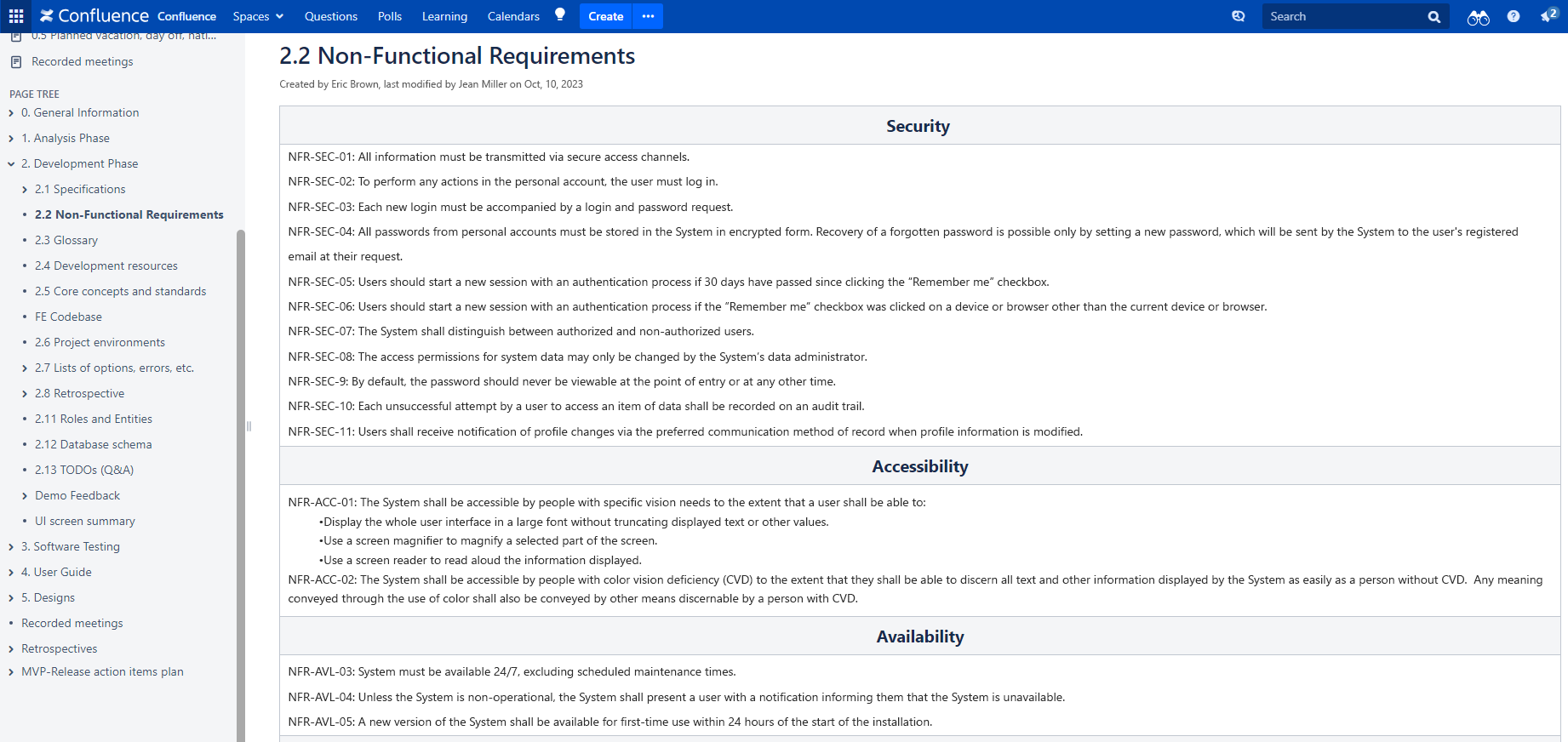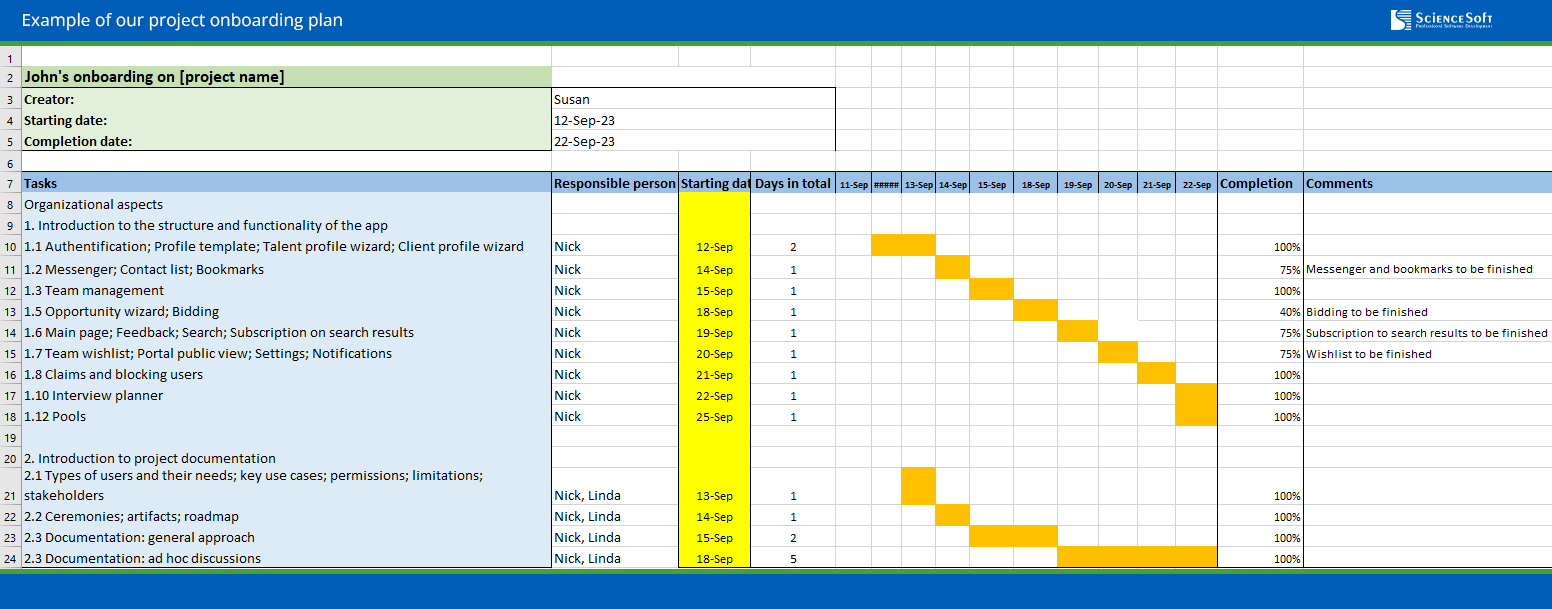Knowledge Management at ScienceSoft
A technology partner with 34 years in the field, ScienceSoft knows the value of accurate and up-to-date project documentation and smooth knowledge exchange between distributed teams.
Why Knowledge Management Is Worth the Time, Even in Fast-Paced Projects
The goal of centralized knowledge management (KM) is to build a shared memory hub that would eliminate project data silos and remove the risk of knowledge loss when a team member leaves the project. Here are the positive outcomes we reliably produce by applying proven KM practices:
- All team members have a single point of truth for project data, and there is no risk of using inconsistent or outdated information.
- The access to information is quick, with no need to search through multiple sources or contact other team members.
- Any authorized team member can access the knowledge, regardless of their physical location.
- With a standardized approach to knowledge collection and storage, there's less room for human error or data duplication.
- The project is protected from the bus factor as the knowledge is never stored only in individual employees' notes or memory.
Poor Knowledge Management Attitudes We Avoid
Not understanding the value of KM
Viewing knowledge management as a burden and not consistently dedicating time to collecting and sharing project information.
Reliance on personal initiative
Leaving KM up to each team member's preferences, with some being diligent in documentation and some neglecting it completely. This also poses the risk of two or more people working on the same document in parallel.
Chaotic knowledge storage
Lacking a systematic approach to knowledge storing and ending up with a hoard of data that is impossible to navigate.
Too much information
Accumulating all project knowledge without a clear idea of what needs to be preserved. This leads to an overabundance of irrelevant data that requires extra resources to maintain.
No team-wide knowledge integration
Not aggregating the information from different project functions (e.g., development and QA) and having fragmented project knowledge as a result.
Withholding knowledge from a client
Not sharing the full project knowledge with the client to benefit from vendor lock-in.
ScienceSoft's Mature Approach to Knowledge Management
Time-efficient workflows
Knowledge management is incorporated into our processes, so we don't have to spend extra time on it. Each team member knows what knowledge assets they are responsible for.
Process ownership
We are ready to take full ownership of the KM process for our clients. We can set up all tools and practices needed to create, store, maintain, and share the project knowledge.
Building a single point of truth
Even if we use several knowledge management tools, we eliminate the risk of data duplication or data gaps by having a consolidated storage and navigation system.
High-quality documentation
We create comprehensive yet concise and well-structured documentation that covers each project decision we've made.
Secure data access
We implement permission-based access to the knowledge base for each project member, meaning they only receive access to the materials relevant to their role.
Open knowledge sharing
We give full access to the knowledge hub to our client or other outsourced teams and provide on-demand mentorship or training sessions for fast project handover.
Shared Responsibility in Knowledge Management Activities
Building software — or leading any IT project, for that matter — with incomplete documentation is a big risk because the current project team becomes the only knowledge owner. If they are out of the game, the knowledge is out, too.
In this context, knowledge management becomes a future-proof strategy. It doesn't directly impact the quality of the project deliverables but safeguards you against dishonest practices or any force majeure events. Even if you have to change your entire team one day, you'll be able to simply hand over the full documentation to the new developers and keep the project stable.
Knowledge Management Process at ScienceSoft
We have established a simple and intuitive KM process to comprehensively document our work and ensure smooth knowledge transfer.
Knowledge creation
- Meaningful inline comments. Good code is self-explanatory, and we would never try to excuse unclear code with abundant comments. We use comments and docblocks to explain non-obvious code functions or refer to the copied code's origins. Code comments ensure that any competent developer can pick up the software at any stage of its lifecycle and continue its support and evolution.
See an example of inline code comments

HIDE
- Comprehensive documentation. We document our work at all project stages, from discovery to programming and QA. Complete and transparent documentation describing the software and project history is essential for full knowledge transfer, leaving individual team members no chance to forget or miss something. You can jump to our software documentation guide to check more examples of our approach.
- Document submission checklists. We follow document submission checklists (they can be our internal, required by a client, or imposed by regulatory authorities) to ensure unified document structure, content, and formatting.
Knowledge storage
- Individual knowledge management approach to each project. We analyze the client's requirements for KM, including the knowledge base composition, its upkeep cost, and the expected security level. Using this information, we choose an optimal set of tools to build a knowledge base compliant with the gathered requirements.
- Centralized knowledge repository. We centralize data storage and document collaboration to prevent person-to-person knowledge transfer and ensure access to complete and up-to-date information for stakeholders and project teams. A centralized data repository is all the more important for large and distributed teams.
See an example of a project space on Confluence

HIDE
- Thought-out knowledge repository structure. It's not enough to have a single point of truth; the knowledge must be organized logically and conveniently so that users can find the required information quickly. We use different techniques to facilitate smooth knowledge browsing and search: categorization, metadata, tagging, branching navigation, and more.
- Access control. We define strict role-based permissions for the knowledge base to protect the documentation from unauthorized access and manipulation.
Knowledge sharing
- Future-proof project onboarding. We design an efficient onboarding process to quickly share relevant knowledge with new team members. This ensures little to no project disruptions, even in cases of employee turnover, promotions, or role changes.
See an example of our project onboarding plan

HIDE
- Convenient knowledge sharing within a project team. We integrate our knowledge management environment with the collaboration tools used on the project (e.g., Slack, Trello, Microsoft Teams) so that team members can collaborate and share feedback on each document in real time.
One image is often better than a thousand words, so where possible, we use clear diagrams and tables instead of plain-text documentation to save everybody's time.
- Interdisciplinary collaboration. We help establish a smooth collaborative process between different departments and implement automated approval and review mechanisms.
- On-demand mentorship and training. When needed, we can organize in-person knowledge transfer sessions to fully relay the project specifics to new team members and help them close their skill gaps faster.
Knowledge maintenance
- Version control. We enforce robust version control to ensure that everyone is working on the latest document version, can see its previous drafts and iterations, and can roll back to an older version if needed.
- Scheduled knowledge audits. We regularly revisit the accumulated knowledge to review its comprehensiveness and relevance. We check the knowledge base for gaps and obsolete data and continuously improve its structure for easier navigation.
- Knowledge archiving. We set up a separate space for archiving outdated knowledge. This way, there is no risk that a team member would use obsolete data by mistake, but they can still access it if needed.
- Backup and disaster recovery. We embed mechanisms for data backup and recovery into the project's IT infrastructure to protect the knowledge against data corruption or system failures.

 Schedule a call
Schedule a call

